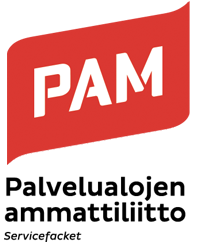When mirror and scissors are not enough
The hairdressing sector looked truth in the eye and took action. However, it has not been easy to improve the occupational health and safety of barbers and hairdressers within the EU.
In the small hairdressing sector the parties in the labour market have been working together at the European level, as pioneers of sorts of social dialogue on working life issues.
In the spring of 2012 they signed a framework agreement on the protection of occupational health and safety in the hairdressing sector. The keywords include gloves, training, air conditioning and prevention, and the aim is to keep barbers and hairdressers healthy. The sector was forced to look truth in the eye when studies revealed that workers in the sector suffers from skin and respiratory diseases as well as musculoskeletal diseases.
But even pioneers do not always get ahead without problems. Unanimity did not lead to the drafting of legislation in the EU Commission, as ten countries – including Finland and Sweden – voted against it. They argued that instead of a detailed Directive, the labour market organisations should take charge of improved occupational safety.
The practices of different European countries for improving occupational health and safety in the hairdressing sector were discussed at a workshop organised in Helsinki in September. The workshop was organised by the parent organisation of service sector unions UNI Hair & Beauty and the association of employers’ organisations Coiffure EU. The participants mainly comprised representatives of employers' and workers' organisations from different countries.
A great deal young people work in the sector, and the agenda was set by François Laurent, the head of UNI Hair & Beauty: how to talk positively about safety in a way that is understandable to 20-year-olds?
How to talk about the need for using less aggressive chemicals and the importance of breaks and ergonomics?
Swedish representatives included negotiation manager Ewa Björkman from the workers' union Handels and the chair of the employer organisation Sveriges Frisörföretagaren Matilda Mieling.
"In Sweden the framework agreement has already been incorporated into the collective agreement for the sector," Mieling says.
However, they called for a binding EU-level Directive, since the sector employs a great deal of self-employed persons who are not covered by the collective agreement.
Other speakers also voiced concerns about distorted competition if occupational safety costs only burden employed persons.
PAM agreement expert Tarja Pajuniemi said that in Finland the employer has not even wanted to negotiate the possibility of incorporating parts of the framework agreement into the collective agreement.
Text:: Marja Ikkala


